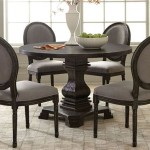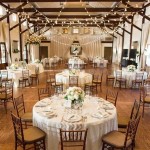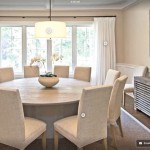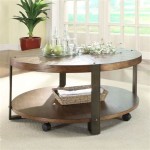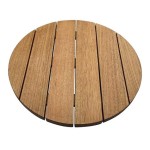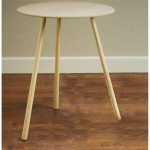Round Table Centerpiece Ideas: Elevating Event Aesthetics
Round tables are a popular choice for events ranging from intimate dinners to grand weddings, primarily because they foster conversation and create a sense of inclusivity among guests. However, the very shape that lends itself to these benefits also presents a unique challenge: the centerpiece. A well-chosen centerpiece can transform a simple table setting into a visually stunning focal point, contributing significantly to the overall ambiance of the event. Effective centerpieces should complement the table size, shape, and the event's theme, without obstructing views or hindering conversation. Successfully navigating these considerations requires careful planning and an understanding of design principles.
The goal of this article is to provide a comprehensive overview of round table centerpiece ideas, addressing various styles, budgets, and event themes. By exploring different options and offering practical considerations, this resource aims to assist in selecting centerpieces that are both aesthetically pleasing and functionally appropriate.
Factors Influencing Centerpiece Selection
The selection of a round table centerpiece is not merely an aesthetic decision; it is a strategic one influenced by a multitude of factors. Understanding these factors is crucial for making informed choices that align with the event's goals and constraints.
Budget: This is often the primary constraint. Centerpiece costs can range from inexpensive DIY options to elaborate floral arrangements requiring professional florists. Defining a budget upfront will help narrow down the possibilities and ensure that resources are allocated effectively. Consider whether rental options are available, as this can be a cost-effective alternative to purchasing centerpieces, particularly for large events. Furthermore, exploring budget-friendly materials and designs, such as using seasonal foliage or repurposing existing items, can significantly reduce expenses.
Event Theme and Style: The centerpiece should seamlessly integrate with the overall theme and style of the event. For example, a rustic wedding might feature wooden elements, wildflowers, and burlap accents, while a modern corporate gala might opt for sleek, minimalist designs with metallic accents and geometric shapes. Consider the color palette, textures, and overall mood intended for the event and choose centerpieces that reinforce these elements. Visual harmony between the centerpieces and other décor elements, such as linens, chair covers, and lighting, is essential for creating a cohesive and aesthetically pleasing environment.
Table Size and Layout: The size of the round table directly impacts the scale and design of the centerpiece. For smaller tables, a single, compact arrangement might suffice, while larger tables require more substantial centerpieces or a grouping of smaller elements to fill the space effectively. The height of the centerpiece is also critical. Centerpieces that are too tall can obstruct views and inhibit conversation, while those that are too short can get lost amidst the tableware and other decorations. Generally, aim for centerpieces that are either below eye level (approximately 12 inches) or significantly above (over 24 inches) to avoid obstructing sightlines.
Seasonality and Availability: Utilizing seasonal flowers and materials is a cost-effective way to create beautiful and relevant centerpieces. Seasonal blooms are typically more readily available and less expensive than out-of-season options. Moreover, they often reflect the natural beauty of the time of year, adding a layer of authenticity to the event. Consider incorporating other seasonal elements, such as pumpkins and gourds in the fall, pinecones and berries in the winter, and fresh fruits and vegetables in the summer.
Practical Considerations: Beyond aesthetics, practical considerations are paramount. The centerpiece should be stable and secure, preventing accidental spills or damage. It should also be easy to handle and transport, especially if the event involves setup and takedown by non-professional staff. Furthermore, consider any allergies or sensitivities that guests might have when selecting flowers or other materials. Avoid overly fragrant blooms or materials that might trigger allergic reactions. Finally, ensure that the centerpiece does not pose any fire hazards, particularly if candles are involved.
Types of Round Table Centerpieces
The variety of round table centerpiece options is virtually limitless, catering to diverse tastes and preferences. Categorizing these options can help streamline the selection process and inspire creative ideas.
Floral Arrangements: Traditional floral arrangements remain a popular choice for round table centerpieces, offering a wide range of styles and price points. From classic roses and lilies to exotic orchids and tropical blooms, the possibilities are endless. Consider the shape and style of the arrangement. A rounded, symmetrical arrangement can complement the shape of the table, while a more asymmetrical arrangement can add visual interest and a touch of modernity. Explore different vase styles, such as tall trumpet vases, low bowls, or rustic containers, to match the event's theme and style. The key to a successful floral centerpiece is to select flowers that are fresh, vibrant, and arranged in a way that is both aesthetically pleasing and structurally sound.
Candle-Based Centerpieces: Candles add warmth and ambiance to any event, making them a versatile and elegant choice for round table centerpieces. Combine candles with other elements, such as flowers, greenery, or crystals, to create a more elaborate and visually appealing display. Consider using different candle heights and shapes to add dimension and interest. Votive candles in glass holders are a simple and affordable option, while pillar candles in ornate candelabras can create a more dramatic effect. Ensure that candles are placed safely away from flammable materials and that the flames are managed properly throughout the event.
Greenery and Natural Elements: For a more natural and organic look, consider using greenery and other natural elements as the centerpiece. Greenery can be used on its own or combined with flowers to create a lush and textured display. Options include ferns, eucalyptus, ivy, and other foliage. Add natural elements, such as branches, stones, or moss, to enhance the organic feel of the centerpiece. This type of centerpiece is particularly well-suited for rustic, woodland, or outdoor-themed events. It is often a more cost-effective option than elaborate floral arrangements, as greenery is typically less expensive than flowers.
Non-Floral Decorative Objects: Think beyond flowers and explore other decorative objects that can serve as unique and eye-catching centerpieces. Consider using antique books, vintage lanterns, or collections of interesting objects that reflect the event's theme or the host's personal style. Sculptural pieces, such as geometric shapes or abstract art, can add a modern and sophisticated touch. Fill glass containers with colorful beads, stones, or water to create a visually appealing and customizable centerpiece. The key is to choose objects that are visually interesting, well-proportioned to the table size, and consistent with the overall aesthetic of the event.
Themed Centerpieces: Tailor the centerpiece to the specific theme of the event. For a beach-themed party, consider using seashells, starfish, and sand in glass containers. For a holiday celebration, incorporate ornaments, pinecones, and festive ribbons. For a sports-themed event, use miniature sports equipment or team colors. Themed centerpieces add a playful and personalized touch to the event, creating a memorable and engaging experience for guests. Be mindful of striking a balance between thematic relevance and aesthetic appeal. Avoid centerpieces that are overly literal or cluttered, and focus on creating a visually appealing display that enhances the overall ambiance of the event.
Practical Considerations for Centerpiece Design and Implementation
Beyond the aesthetic aspects of centerpiece selection, there are several practical considerations that should be addressed to ensure a successful implementation. These considerations relate to safety, functionality, and logistics.
Height and Visibility: As previously mentioned, the height of the centerpiece is crucial for maintaining clear sightlines and facilitating conversation. Centerpieces should be either below eye level (around 12 inches) or significantly above (over 24 inches). If opting for a taller centerpiece, consider using a slender vase or stand that minimizes obstruction. Test the centerpiece height by sitting at the table and ensuring that it does not block the view of other guests.
Stability and Safety: The centerpiece should be stable and secure to prevent accidental spills or damage. Use sturdy bases and ensure that all elements are securely attached. If using candles, place them in holders that are fire-resistant and stable. Avoid using materials that are easily flammable or that could pose a safety hazard. Consider the movement of guests around the tables and ensure that the centerpieces are positioned in a way that minimizes the risk of them being bumped or knocked over.
Ease of Setup and Takdown: For large events, the setup and takedown of centerpieces can be a significant undertaking. Choose centerpieces that are relatively easy to transport, assemble, and disassemble. If using multiple elements, consider pre-assembling them as much as possible to streamline the setup process. Clearly label all components and provide instructions for setup and takedown to ensure that the process is efficient and error-free. Consider the storage space required for the centerpieces before and after the event.
Maintenance and Durability: Consider the maintenance requirements of the centerpiece throughout the event. Floral arrangements may require periodic watering or misting to keep them fresh. Candles may need to be replaced or adjusted. Choose materials that are durable and resistant to damage. If using delicate or fragile items, take extra precautions to protect them from being damaged by guests or staff. Have a plan in place for addressing any issues that may arise during the event, such as replacing wilted flowers or relighting candles.
Budget Management: Keep a close eye on the budget throughout the entire process. Obtain quotes from multiple vendors and compare prices. Negotiate prices where possible. Consider DIY options for certain elements of the centerpiece to save money. Track all expenses carefully and make adjustments as needed to stay within budget. Avoid making last-minute changes or additions that could significantly increase costs.
:max_bytes(150000):strip_icc()/round-table-wedding-decor-ideas-dragonfly-photography-49c811012a23428ebe52a4222def3108.jpg?strip=all)
22 Gorgeous Round Table Wedding Décor Ideas

Most Stunning Round Table Centerpieces Wedding Tables

10 Lovely Ways To Decorate Round Tables Luxury Weddings

40 Round Wedding Table Decorations Ideas 2024 5 Tips

Simple Centerpieces Are Perfect For Round Tables Weddinginspo Wedding Tablescapes

How To Decorate A Round Table

Gorgeous Round Table Centerpiece Ideas For Summer Perfecting Places

10 Lovely Ways To Decorate Round Tables Luxury Weddings

How To Decorate A Round Table

Gorgeous Round Table Centerpiece Ideas For Summer Perfecting Places
Related Posts

